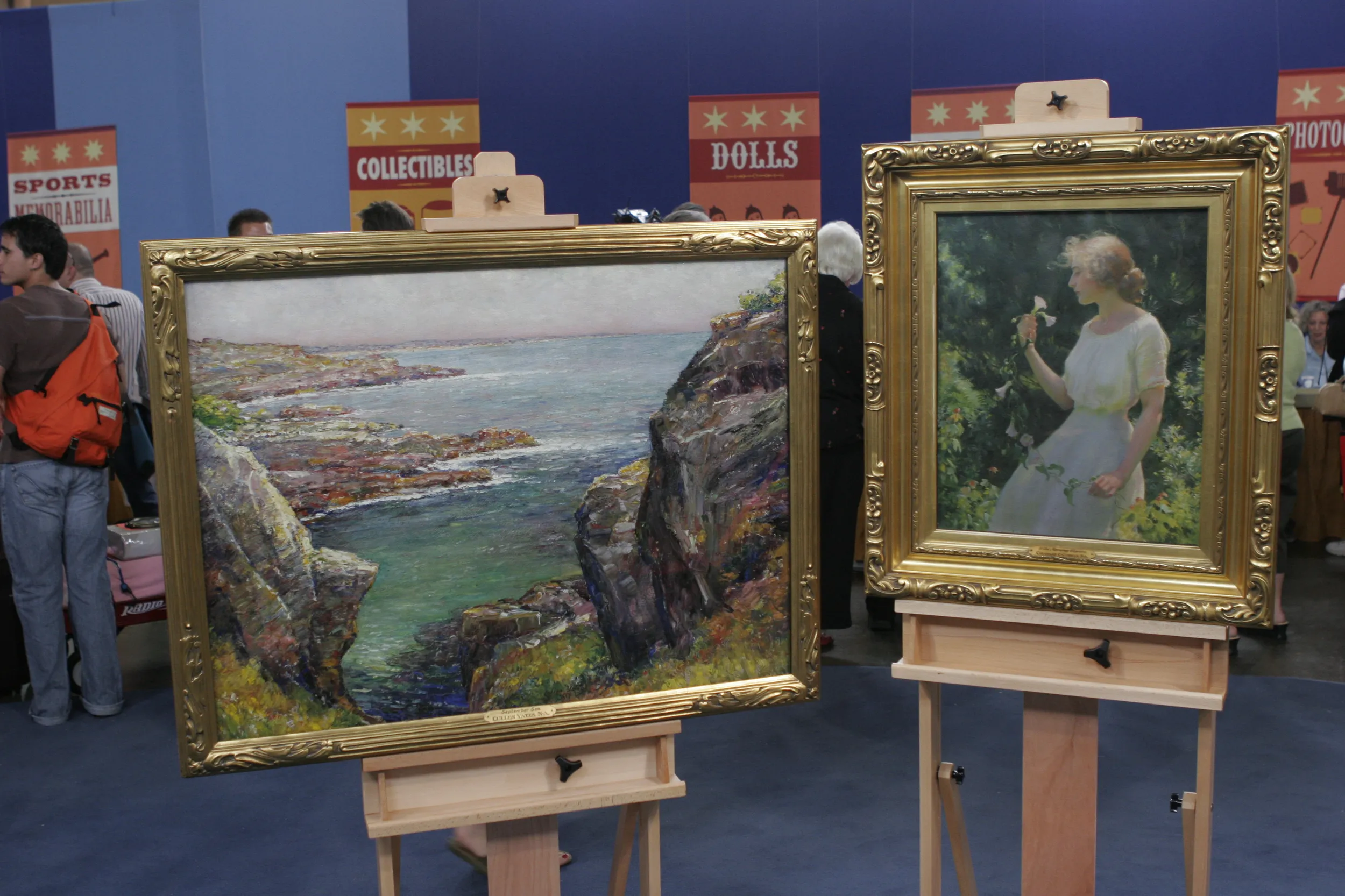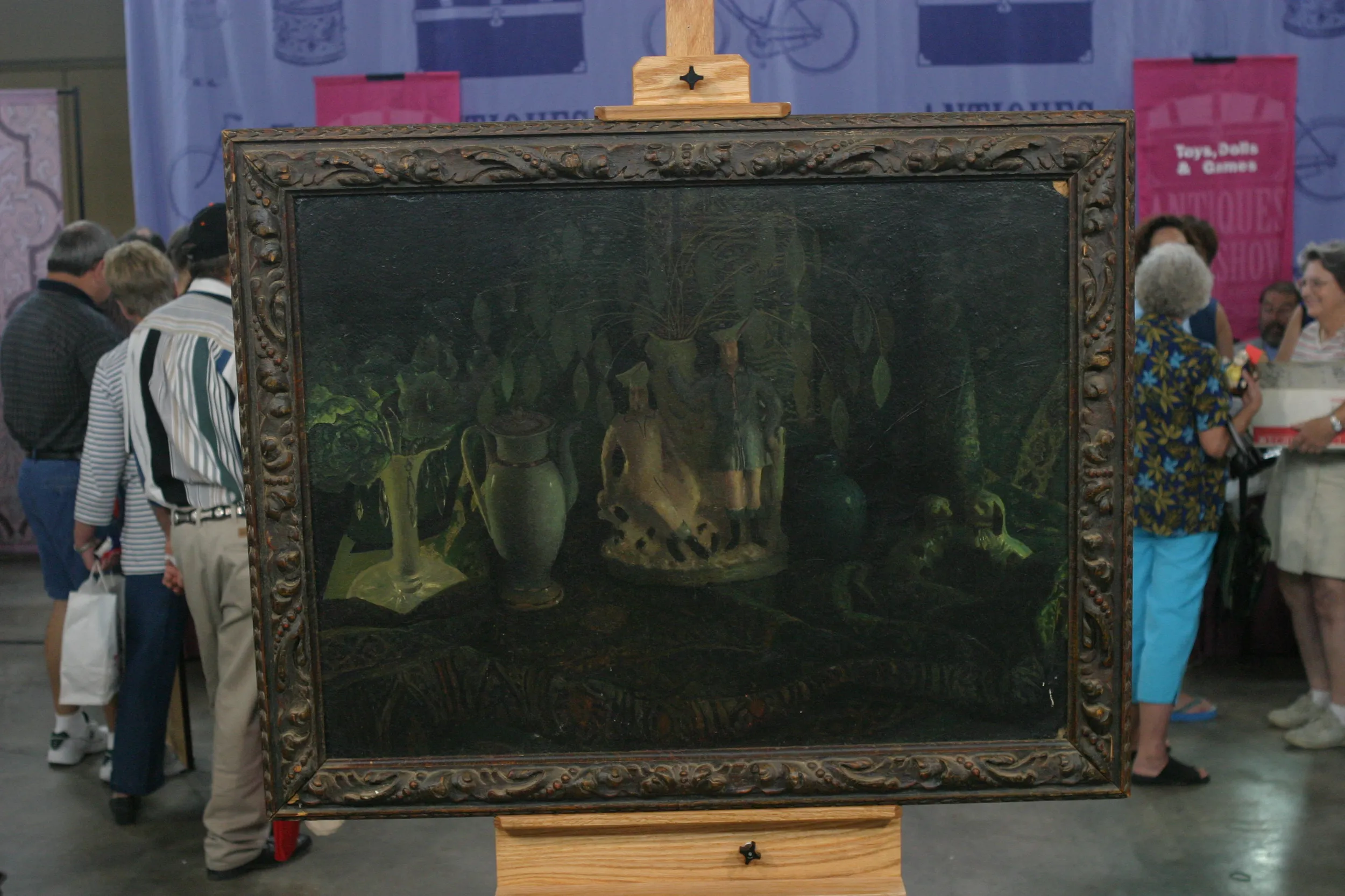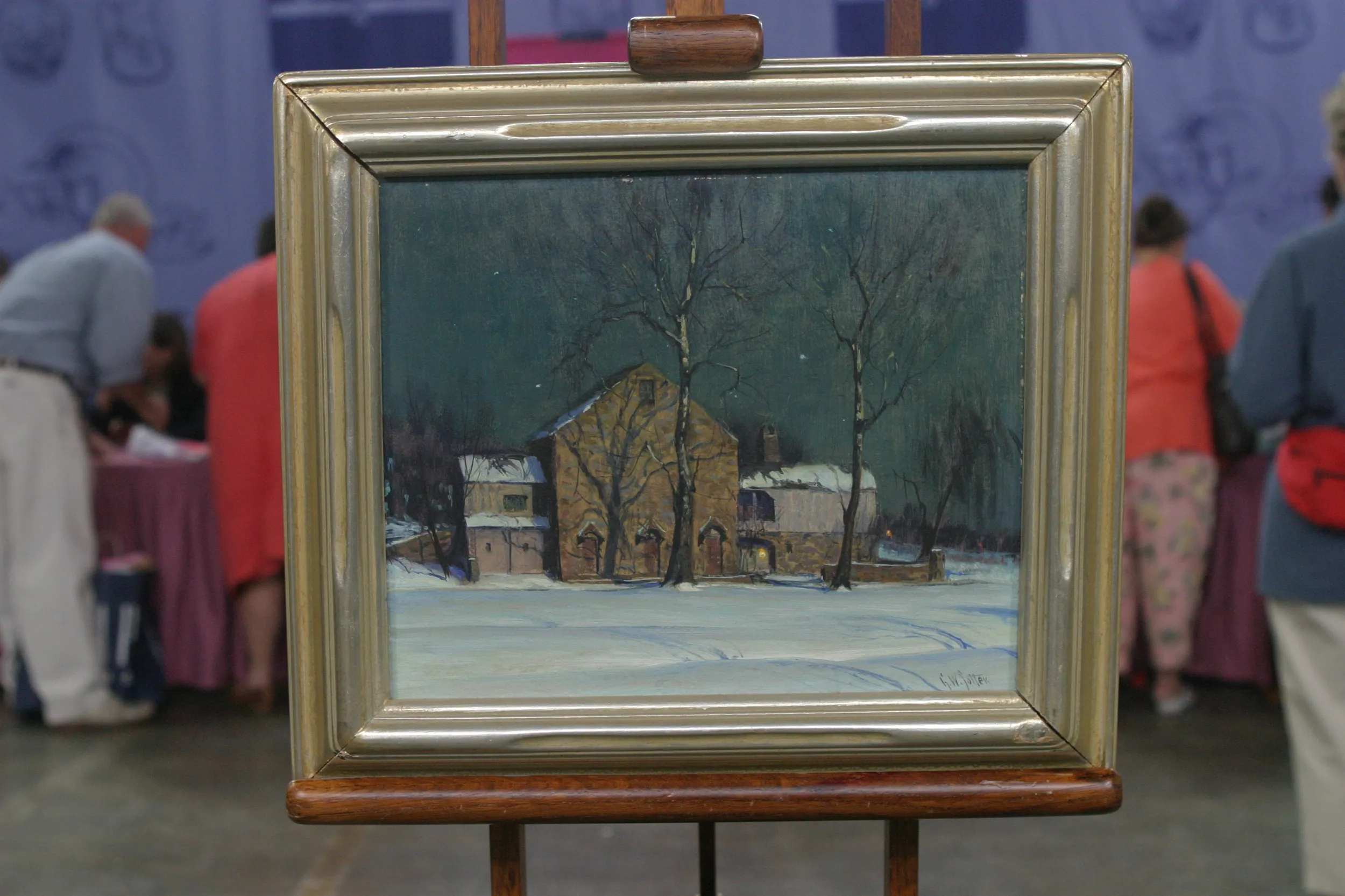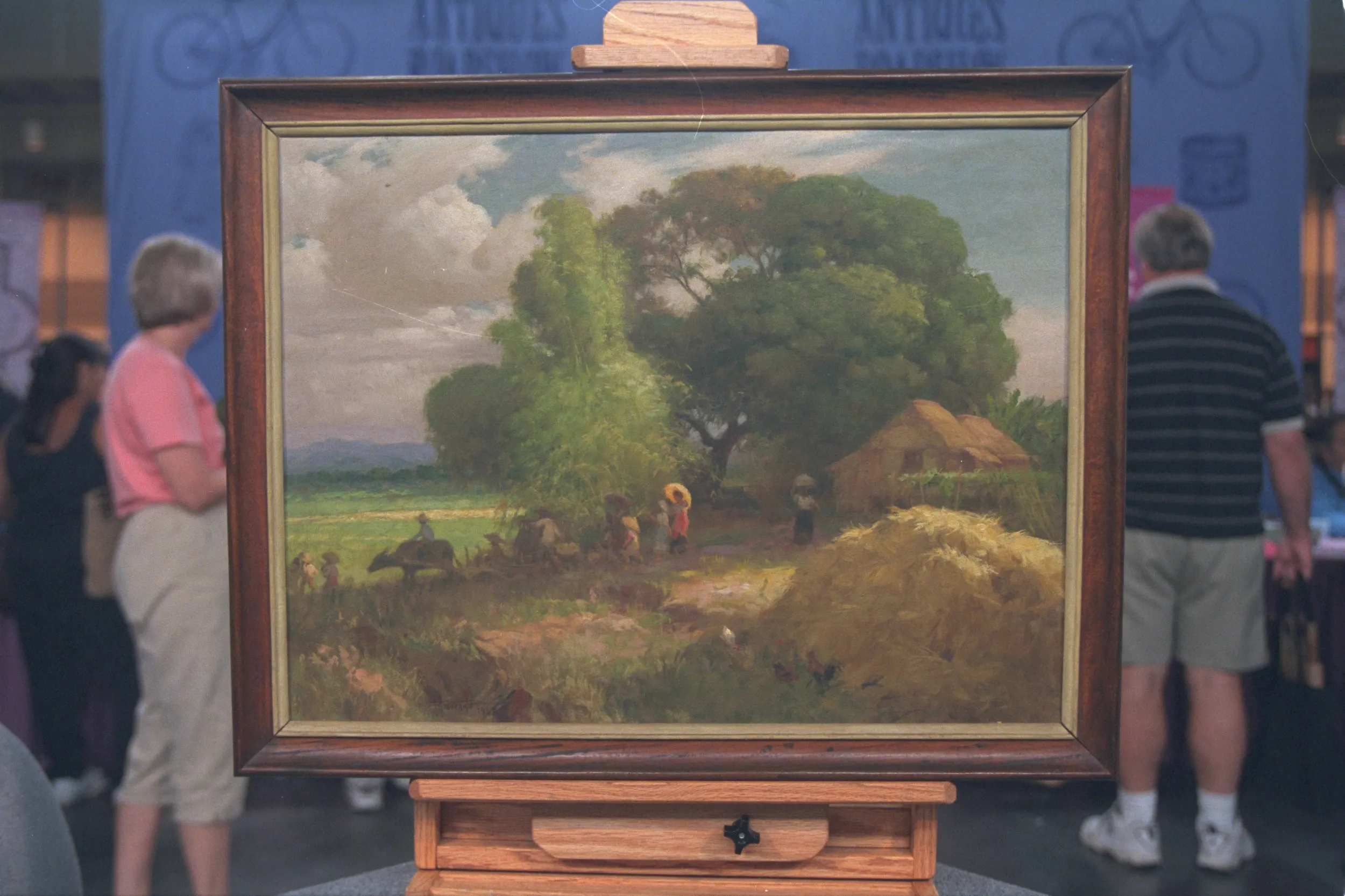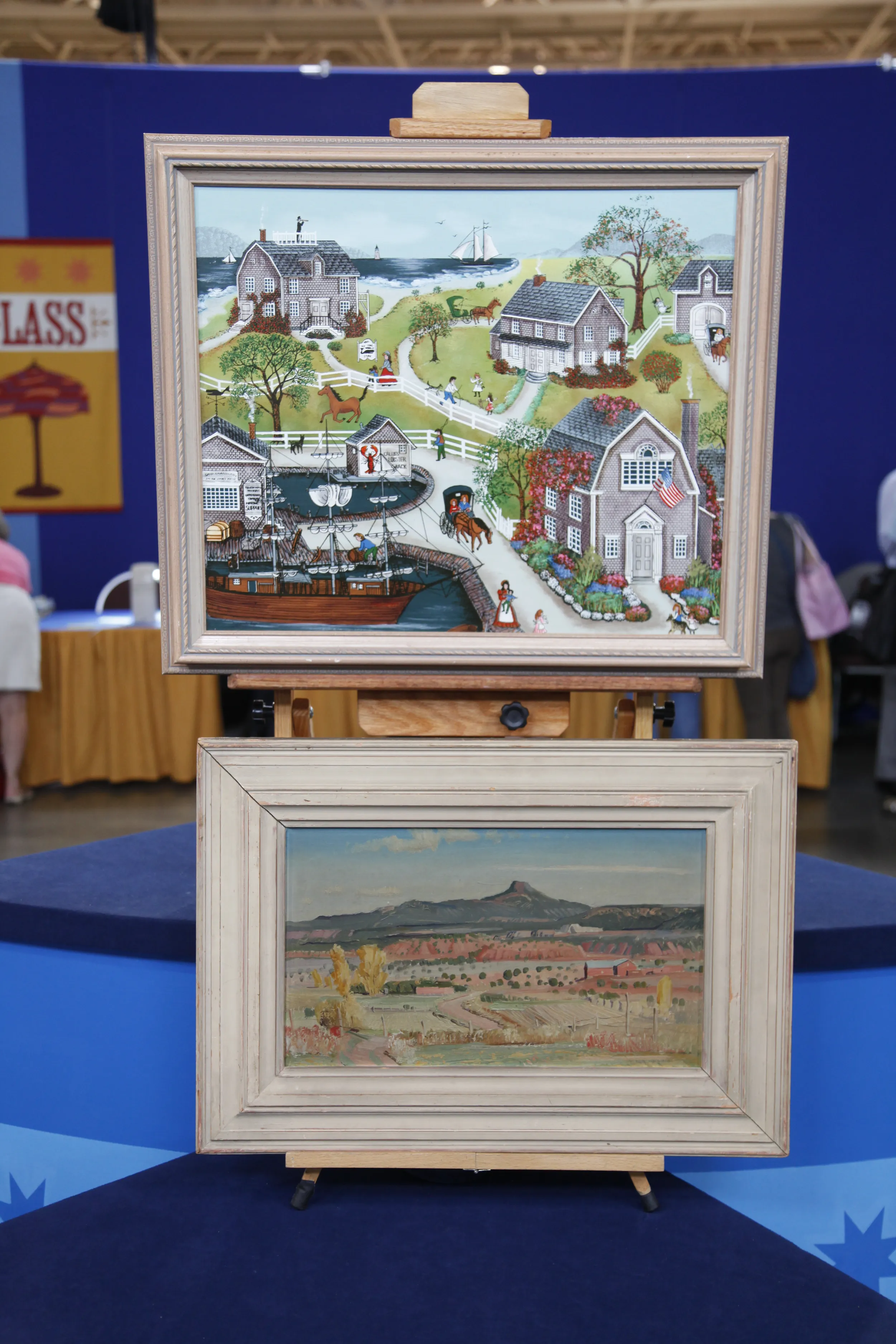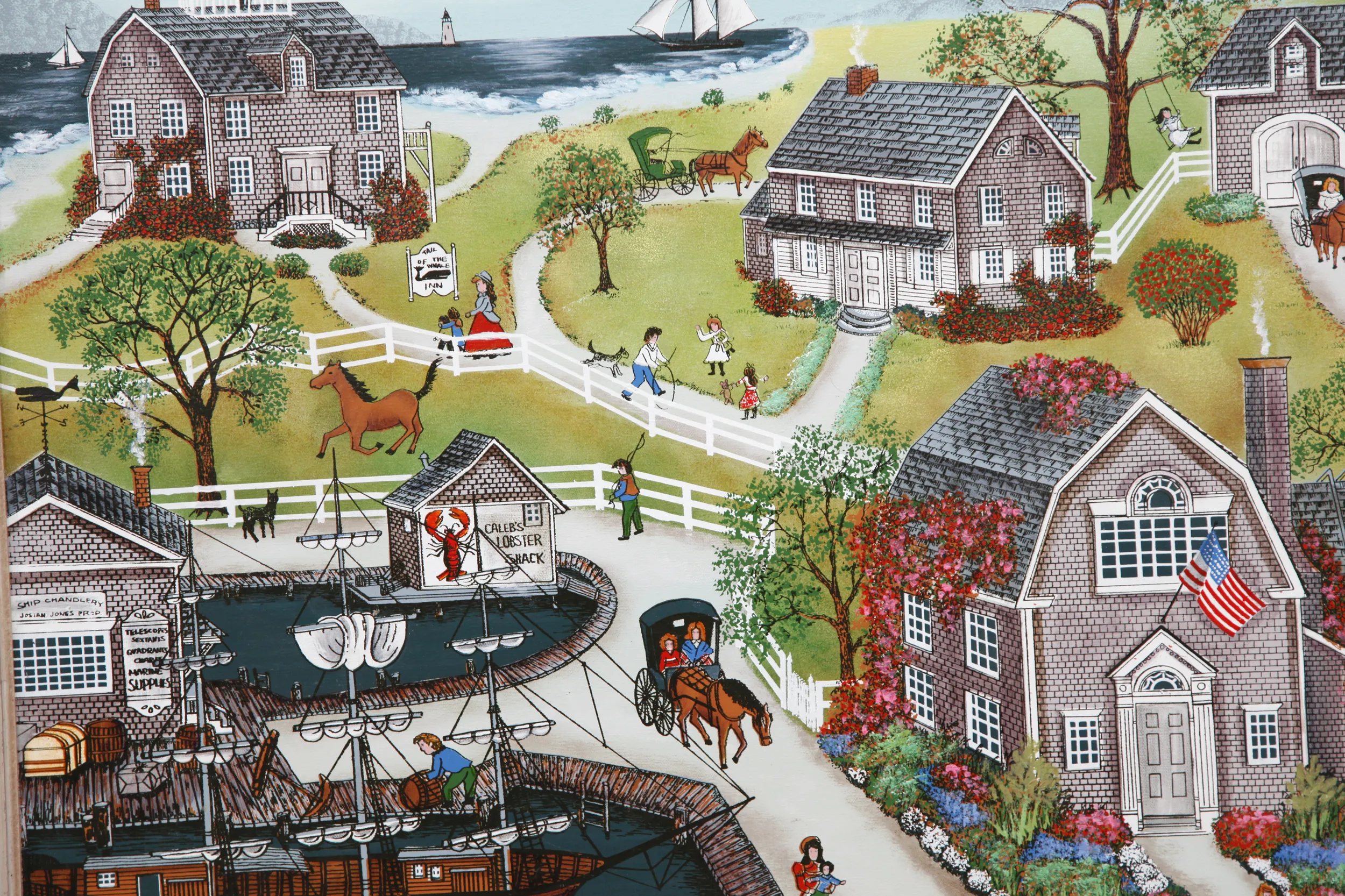GUEST: I went to a farm auction about five or six years ago, about 20 or 30 miles west of Minneapolis here. They were in a box, two together, and I bid on them. And I started the bidding at a dollar, and somebody bid three or four, and I wound up getting them for five dollars.
APPRAISER: Five dollars for both of them?
GUEST: For the both of them, yeah.
APPRAISER: And did you know anything about them when you bought them?
GUEST: No, I didn't. I just liked the looks of that one in particular. I thought this one was kind of ugly, but... (laughs) So I got them and took them home, and I hung that one in my living room for quite a while, and I hung this one in the family room. And I've just enjoyed them since I had them.
APPRAISER: The painting on the top is by an artist named Spencer. It's signed in the lower left. And it's actually a painting that was done more recently, certainly in the latter half of the 20th century, and probably by an artist who is a bit more commercial, and painting for more decorative reasons. We put a value of around $100 to $200 on that, if you were to find it in an antique shop. Now, the second painting, were you able to read the signature on this?
GUEST: I couldn't see the name, so I couldn't look it up.
APPRAISER: Well, here we have the signature in the lower right. And the name of the artist is Victor Higgins. Victor Higgins grew up on a farm in Shelbyville, Indiana.
GUEST: Okay.
APPRAISER: He was born in 1884, died in 1949.
GUEST: Oh, you know all about this.
APPRAISER: Well, he's a well-known artist. He's actually a member of what's called the Taos Society of Artists. Now, when you bought this, did you think this looked like a particular area?
GUEST: I go to Arizona in the wintertime, and I thought it looked like down in Arizona, New Mexico, down in that area.
APPRAISER: Well, you're absolutely right. He moved there permanently from Chicago around 1915, and he remained there until the end of his life. He was well known for painting pueblos and the life of the Native American, as well as landscapes, like you see here. His style started out in a more impressionistic manner, but by the time this was painted, he became a little bit more of a modernist. And you see some of the hard edge lines and forms that denote modernism, as opposed to impressionism. Now, the date of this painting is not exactly known. However, the painting itself is on masonite. And masonite was not really in use until after 1926. So we can say that this was done after 1926.
GUEST: Is that oil or acrylic?
APPRAISER: That's oil.
GUEST: Okay.
APPRAISER: And you can see that it has sort of a yellow cast over the surface. It's very dirty.
GUEST: Does it need cleaning?
APPRAISER: It needs cleaning. Right up at the edge, you can see that it's a little bit lighter blue. And if it were clean, that sky would actually be a bright blue.
GUEST: But it should be cleaned by somebody who knows, really, what they're doing, not me.
APPRAISER: Yes, right. Yes, that's right. And the cost of cleaning something like this would not be very expensive, because it's otherwise in excellent condition. The frame is original. It's very typical of what he would use, and you can see it's a painted frame as opposed to gold leaf. If this were for sale in an art gallery in Santa Fe, for example, which is where he probably would sell best, I think it would sell in the range of $75,000.
GUEST: Whew! You blew me away. $75,000?
APPRAISER: Yes.
GUEST: I don't believe it.
APPRAISER: Well, if it were cleaned it could even be up closer to $100,000, depending on how it cleaned up.
GUEST: Wow.
APPRAISER: That's quite a find, terrific.
GUEST: $75,000.
APPRAISER: Yeah, it's wonderful.
GUEST: Unbelievable.


